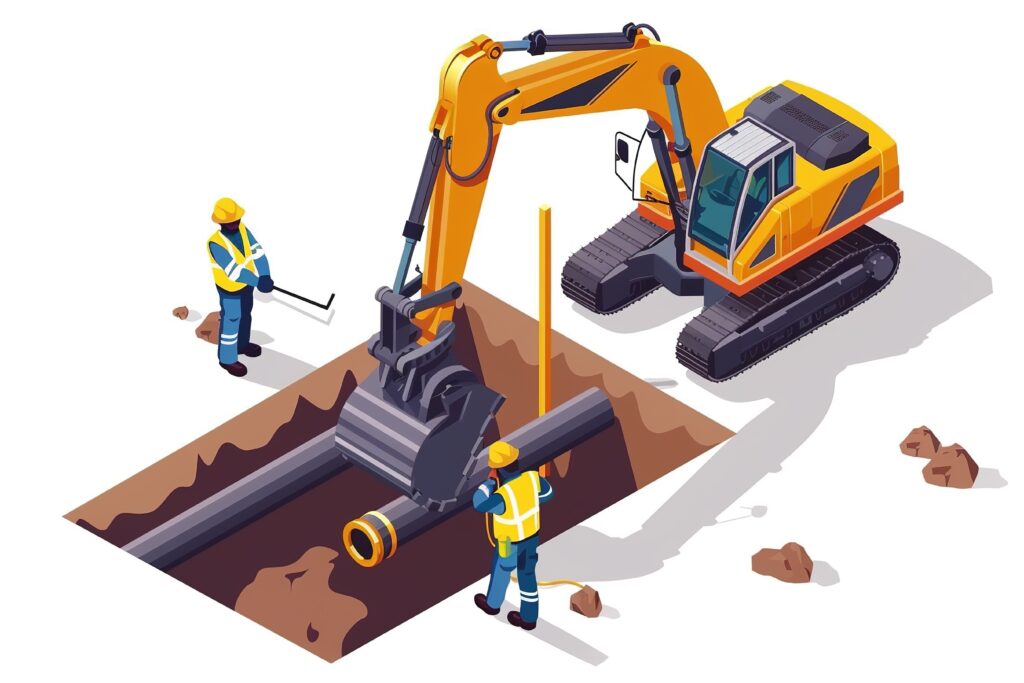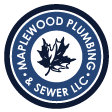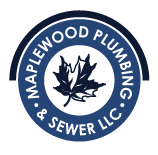
When buying a home, most people fixate on what’s visible: the roof’s shingles, the foundation’s cracks, the new kitchen fixtures. Beneath the surface lies a vital component that’s often ignored, the sewer line. A sewer line inspection, commonly referred to as a “sewer scope inspection,” is a specialized service performed by a plumber to uncover hidden issues like cracks, blockages, or root intrusion. This proactive measure can save homebuyers from financial ruin and ensure their investment remains sound.
What Is a Sewer Scope Inspection?
A sewer scope inspection is a detailed examination of the sewer line (the underground pipe that transports wastewater from your home to the municipal sewer system or septic tank.) Unlike a standard home inspection, which skims the surface of plumbing systems, a sewer scope inspection delves deep into the hidden infrastructure that keeps your home functioning.
The process is straightforward yet technologically advanced. A licensed plumber uses a flexible, high-resolution camera attached to a long cable, inserting it into the sewer line through an access point called a cleanout. As the camera navigates the pipe, it beams back real-time video to a monitor, revealing the pipe’s interior condition. This non-invasive method requires no digging, making it an efficient way to diagnose problems that might otherwise go unnoticed.
Why isn’t this part of a typical home inspection? According to the International Association of Certified Home Inspectors (InterNACHI), sewer scope inspections fall outside the scope of standard evaluations.
Why Sewer Line Inspections Matter When Buying a Home
Sewer lines are often out of sight. But when they fail, the consequences are anything but subtle. Here’s why a sewer scope inspection should be non-negotiable during the home-buying process:
Hidden Problems Can Lurk Unseen
Sewer lines don’t advertise their troubles. A home may look pristine above ground, but underground, its pipes could be crumbling, clogged, or infiltrated by roots. Without a sewer scope inspection, these issues remain invisible until they erupt, even after you’ve taken ownership.
The High Cost of Repairs
Fixing a damaged sewer line typically costs between $1,000 and $4,000, but severe cases—like a full pipe replacement—can skyrocket to $25,000 or more. Add in potential interior damage from backups (think ruined flooring or compromised foundations), and it gets more expensive.
Leverage in Negotiations
A sewer scope inspection arms you with knowledge before closing. If the footage reveals a cracked pipe or root intrusion, you can negotiate with the seller to cover repairs, reduce the asking price, or walk away from a risky deal. This leverage can save you thousands and prevent buyer’s remorse.
Peace of Mind
Even if the inspection finds no issues, the reassurance is worth its weight in gold. Knowing your sewer line is intact lets you move into your new home with confidence, free from the nagging worry of lurking plumbing disasters.
Common Sewer Line Issues: What’s Hiding Below?
Sewer lines endure constant wear from wastewater, soil shifts, and environmental factors. Over time, these stressors spawn a range of problems that a sewer scope inspection can detect. Here’s what might be lurking beneath your prospective home:
1. Cracks and Fractures
Older pipes, especially those made of clay or cast iron, are prone to cracking. Ground movement, heavy traffic overhead, or simple aging can fracture these materials. Even tiny cracks can leak, eroding surrounding soil and setting the stage for a collapse.
2. Blockages
Debris like grease, hair, or flushed items can build up inside sewer lines, obstructing flow. These blockages cause slow drains, gurgling noises, or backups—early warning signs that something’s wrong.
3. Root Intrusion
Tree roots seek water. A hairline crack or loose joint in a sewer pipe is an invitation for roots to invade. Once inside, they expand, blocking flow and fracturing pipes further. Homes with large trees nearby are especially vulnerable.
4. Bellied or Sagging Pipes
Shifting soil or poor installation can cause sections of the sewer line to dip, forming “bellies.” These low spots trap waste, leading to chronic clogs and reduced efficiency.
5. Corrosion
Metal pipes, common in older homes, corrode over decades as wastewater eats away at their walls. This weakens the pipe, inviting leaks and eventual failure.
These issues can fester silently for years, escalating into emergencies. A sewer scope inspection is your first line of defense, catching them before they wreak havoc.
The Financial Fallout of Ignoring Sewer Line Problems
Neglecting a sewer scope inspection is a gamble with steep odds. Just crunch the numbers: minor fixes might hit $1,000, but replacing a sewer line beneath a driveway or landscaping can exceed $25,000. Beyond direct repairs, sewage backups can flood basements, ruin drywall, and spawn mold. All those can add thousands to the tab.
How a Sewer Scope Inspection Saves You Money
At $250 to $500, a sewer scope inspection is a modest investment with outsized returns. Here’s how it pays off:
Pre-Closing Bargaining Power
If the inspection uncovers a problem—say, a root-clogged pipe—you can present the evidence to the seller. Options include:
- Seller-Funded Repairs: They fix it before closing.
- Price Adjustment: You negotiate a discount to offset repair costs.
- Deal Breaker: Severe damage might prompt you to walk away, dodging a money pit.
Avoiding Post-Purchase Surprises
Paying $300 upfront beats discovering a $10,000 issue after moving in. The inspection either confirms a healthy sewer line or flags repairs you can plan for—not scramble to fund.
Long-Term Savings
Identifying minor issues early lets you address them before they balloon into major failures.
When Should You Get a Sewer Scope Inspection?
Timing is everything. Here’s when a sewer scope inspection is most critical:
Before Closing
This is the golden window. Schedule the inspection during your due diligence period to assess the sewer line before you’re legally bound. It’s your chance to negotiate or reconsider.
Older Homes
Properties over 20 years old often have aging pipes—clay, cast iron, or early PVC—that are more susceptible to damage. An inspection is a must.
Tree-Heavy Lots
Large trees near the sewer line (often mapped on property surveys) signal root intrusion risk. Don’t skip the scope if oaks or willows loom close.
After Plumbing Red Flags
Already own a home? Slow drains, odd noises, or backups warrant an immediate inspection to catch issues before they escalate.Even as a homeowner, periodic checks every 5-10 years keep your sewer line in check, especially for vintage properties.
The difference between regret and confidence is just one call away. This isn’t about plumbing. This is about protecting what matters. Schedule your sewer camera inspection with Maplewood Plumbing today.
FAQs
Is a sewer scope inspection worth it when buying a home?
Absolutely. A sewer scope inspection typically costs $250-$500 but can uncover problems that could cost $1,000-$25,000 to repair. This small investment provides crucial information about what’s happening beneath your potential new home and can give you significant negotiating power before closing. Even if no issues are found, the peace of mind alone is worth the cost.
What does a sewer line camera inspection cost?
The average cost of a sewer line camera inspection ranges from $250 to $500, depending on your location and the complexity of your plumbing system. Some plumbing companies may offer the service at a discounted rate when bundled with other inspection services. This is a small price compared to the thousands you might spend on emergency repairs if problems go undetected.
Should I get a sewer inspection when buying a house?
You should schedule a sewer inspection during your due diligence period before closing on the house. This timing is crucial because it allows you to use any findings in your negotiations with the seller or even walk away from the deal if severe problems are discovered. For homes older than 20 years, properties with large trees near the sewer line, or if there are any plumbing red flags (slow drains, gurgling noises), a sewer inspection becomes even more essential.
What can a sewer scope inspection detect?
A sewer scope inspection can identify numerous issues including cracks and fractures in the pipes, blockages from debris or foreign objects, tree root intrusions, bellied or sagging pipes that trap waste, pipe corrosion, joint separations, and even improper previous repairs. These problems aren’t visible during a standard home inspection but can lead to costly repairs if left unaddressed.
Can I do a sewer scope inspection myself?
While DIY sewer camera equipment is available for rent, professional plumbers have the expertise to properly navigate the sewer system and accurately interpret what they see. They understand the different pipe materials, know the warning signs of impending failures, and can provide proper documentation that may be useful in negotiations. A professional inspection also typically includes distance measurements to pinpoint the exact location of any issues.
How long does a sewer scope inspection take?
A typical sewer scope inspection takes between 30 minutes to one hour to complete. This includes the time to locate the cleanout, set up the equipment, run the camera through the line, and explain the findings. The actual camera work usually takes just 15-20 minutes, but a thorough professional will take time to document any issues and explain what they mean for you as a potential homeowner.
What happens if problems are found during the inspection?
If issues are discovered during a sewer inspection, you have several options before closing on a home:
- Request that the seller pays for the necessary repairs
- Negotiate a lower purchase price to offset your repair costs
- Request a repair credit at closing
- Walk away from the deal if the problems are severe (assuming your purchase agreement includes an inspection contingency)
For existing homeowners, finding problems early allows you to address them before they cause expensive damage or emergency situations.
How often should sewer lines be inspected?
For existing homeowners, experts recommend having your sewer line inspected every 5-10 years, even if you’re not experiencing problems. Homes with mature trees near the sewer line or older pipes may benefit from more frequent inspections. Regular maintenance checks can catch small issues before they develop into costly emergency repairs.
Are sewer line inspections covered by homeowners insurance?
Most homeowners insurance policies do not cover the cost of sewer line inspections as they’re considered preventative maintenance. Similarly, standard policies typically don’t cover repairs to sewer lines that break down due to age, wear and tear, or tree root invasion. However, some insurance companies offer additional coverage for sewer lines as a rider to your policy, which may be worth considering, especially for older homes.
Will my home inspector check the sewer line?
No, standard home inspections do not include a thorough examination of the sewer line. While home inspectors may check visible plumbing and drainage inside the house, they don’t use camera equipment to inspect the underground sewer pipe. This is why a separate sewer scope inspection is recommended as an additional service during the home buying process.
Let’s Safeguard Your Home Investment
Buying a home is a monumental milestone, but it’s not without risks. A sewer scope inspection is your shield against a failing sewer line. For a few hundred dollars, you gain clarity, leverage, and protection.
Comments are closed


